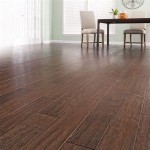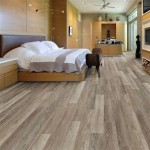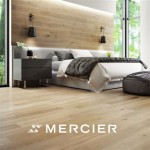Roller Skating Rink Floor Material
The selection of appropriate flooring material is crucial for the success and longevity of any roller skating rink. The ideal surface must provide a balance of smoothness for effortless gliding, grip for controlled maneuvers, and durability to withstand the constant wear and tear from skates. Several factors influence this decision, including the intended use of the rink (artistic skating, speed skating, roller derby, or recreational skating), budget constraints, and maintenance requirements.
Traditionally, maple hardwood flooring has been the gold standard for roller skating rinks. Maple's inherent hardness and tight grain structure make it exceptionally resilient and resistant to impact and abrasion. The dense wood fibers create a smooth, consistent surface ideal for speed and controlled movements. Moreover, maple can be sanded and refinished multiple times, extending the lifespan of the floor and maintaining optimal skating conditions for many years.
The installation process for a maple roller skating rink floor is complex and requires specialized expertise. Typically, individual strips of maple are tongue-and-grooved together and then laid over a subfloor structure designed to provide shock absorption and stability. The entire surface is then sanded and sealed with a specialized coating to enhance smoothness and protect against moisture damage. This meticulous installation process contributes significantly to the overall cost of the maple flooring option.
While maple remains a popular choice, synthetic flooring materials have gained significant traction in recent years. These engineered surfaces offer several advantages, including lower initial costs, simplified installation, and reduced maintenance requirements. Synthetic options often consist of interlocking panels or tiles made from materials like polypropylene, polyurethane, or composites. These materials are designed to mimic the smooth gliding properties of hardwood while offering enhanced durability and resistance to moisture, chemicals, and staining.
One popular type of synthetic roller skating rink flooring is polypropylene. Polypropylene panels are lightweight and easy to install, requiring less subfloor preparation than traditional hardwood. The material is also highly resistant to moisture, making it a suitable choice for outdoor or portable rinks. However, polypropylene may not offer the same level of smoothness and performance as maple, especially for high-level competitive skating.
Polyurethane flooring is another viable option for roller skating rinks. This material offers excellent durability and resistance to abrasion, impact, and chemicals. Polyurethane coatings can be applied over concrete or other substrates, creating a seamless, smooth surface ideal for skating. The resilience of polyurethane contributes to a longer lifespan compared to some other synthetic options. Additionally, polyurethane surfaces can be customized with different colors and designs, offering aesthetic versatility.
Composite flooring materials combine the benefits of various materials to create a high-performance skating surface. These composites may incorporate wood fibers, polymers, and other additives to achieve specific performance characteristics. Composite floors often offer a good balance of smoothness, grip, and durability while being more resistant to moisture and temperature fluctuations than traditional hardwood.
When choosing a roller skating rink floor material, careful consideration must be given to the specific needs of the skaters and the rink environment. Factors such as the type of skating activities, frequency of use, budget, and maintenance capabilities should all inform the decision-making process. Consulting with experienced rink builders and flooring specialists can provide valuable insights and guidance in selecting the most appropriate material for a given application.
Maintenance practices also play a crucial role in the longevity and performance of any roller skating rink floor. Regular cleaning, including sweeping and mopping, is essential to remove dirt, debris, and dust that can accumulate on the surface. Deep cleaning and conditioning treatments may be required periodically to maintain the floor's finish and prevent cracking or deterioration. Promptly addressing any spills or damage can also help to extend the lifespan of the floor.
The advancements in flooring technology continue to expand the options available for roller skating rink construction. New materials and installation techniques are constantly being developed, offering improved performance, durability, and cost-effectiveness. By carefully evaluating the available options and considering the specific needs of the rink, owners and operators can select a flooring material that provides an optimal skating experience while ensuring long-term value and functionality.

Wooden Vs Concrete Roller Rink Does Material Matter

Versacourt Skating Rink Flooring

Versacourt Skating Rink Flooring Surfacing

Roller Skating Floor Specialists Zsfloor Tech Get Quote

Icecourt Roller Skating Rink Floors

The Differences Between Concrete And Wood Skating Rinks

Versacourt Skating Rink Flooring

Versacourt Skating Rink Flooring

Versacourt Skating Rink Flooring

Roller Hockey Surfaces And Sports
Related Posts








